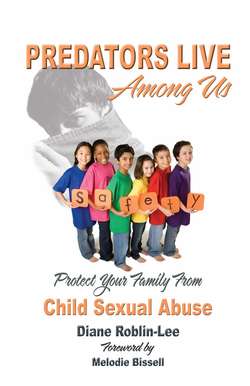Читать книгу Predators Live Among us - Diane Roblin Lee - Страница 11
На сайте Литреса книга снята с продажи.
Some known consequences of child sexual abuse
ОглавлениеBecause only a percentage of actual incidents are reported, it is impossible to ascertain the full impact on society or on individuals. According to the American Medical Association, one-fifth of all victims of child sexual abuse develop serious, long-term psychological problems. The following list is simply an attempt to identify some of the known results and is not meant to suggest that any individual will suffer all of the results listed.
• Post-traumatic stress disorder
• Increased drug and alcohol abuse
• Obsessive-compulsive disorder
• Panic attacks and anxiety disorders
• Depression
• Personality disorders
• Increased utilization of health services
• Increased utilization of social services
• Sexual dysfunctions - ranging from sex addiction to total aversion to sex
• Suicidal ideation
• Greater risk for relationship and parenting problems13
That’s the obvious list. Less obvious are the rampant psychosomatic disorders that can’t be definitively linked to the abuse—headaches, lower back problems and muscle tension caused by stress.
Day to day life for an abuse survivor can be filled with the residue of the experience. Gone is the opportunity for normal peer exploration. Victims already know all about “it.” Relationships can no longer happen normally. The secrecy inherent in all abuse situations robs the child of normal intimacy with anyone—because he or she has a secret which must be guarded at all costs. No one else can get close. The child lives in emotional isolation, often so preoccupied with thoughts of the secret, that it is impossible to concentrate on other normal tasks like school and goal setting. Unable to understand why the child doesn’t focus or get more involved with those around him or her, people can get frustrated with the child, further alienating him or her from normal, loving relationships.
The normal attachment issues are complicated by an inability to properly regulate emotions and stress response.
Self-esteem issues can be huge as survivors grapple with the understanding of their value. It’s very difficult to know you’ve been used like a toy or consumed like a piece of meat. If that sense of not having as much value as other people is not put in perspective, seeing the offender as the one who is “not like other people,” victims can spiral downwards into a life of chronic victimization, allowing themselves to be further used by other people. Finding clear perspective is critical.
Children who have been abused and have not found recovery, are more likely to stay in abusive relationships. Having developed the pattern of putting up with pain and unhappiness in childhood, they have established a kind of perverse “comfort zone.” It’s a situation of damsels (or boys) in distress feeling as though things are most familiar in the distress—the painful “known” versus the peaceful “unknown.” Exiting from such a situation successfully, requires the individual to make the emotional transition from the helplessness of a child to the recognition of empowered adulthood.
The inability to trust is generally the central issue as abused children grow into adulthood. A child who has been abused by an adult in a position of trust, such as a father, grandfather or priest may have a hard time ever trusting again. This inability to trust ripples out to include everyone surrounding the child during the time of the abuse because they (knowingly or unknowingly) failed to protect him or her. And then there’s the issue of trusting themselves to know whom to trust. If they make a mistake, they risk being used or rejected again—like a china doll left broken, abandoned on the floor with a cracked head.
At the very least, sexual abuse of children most often results in bitterness, hostility, misplaced guilt, depression and shame. Unless properly addressed and dealt with, these can last a lifetime, destroying not just the lives of the victims, but all those whose lives are entwined with them. This will be further discussed in Chapter Seven.
